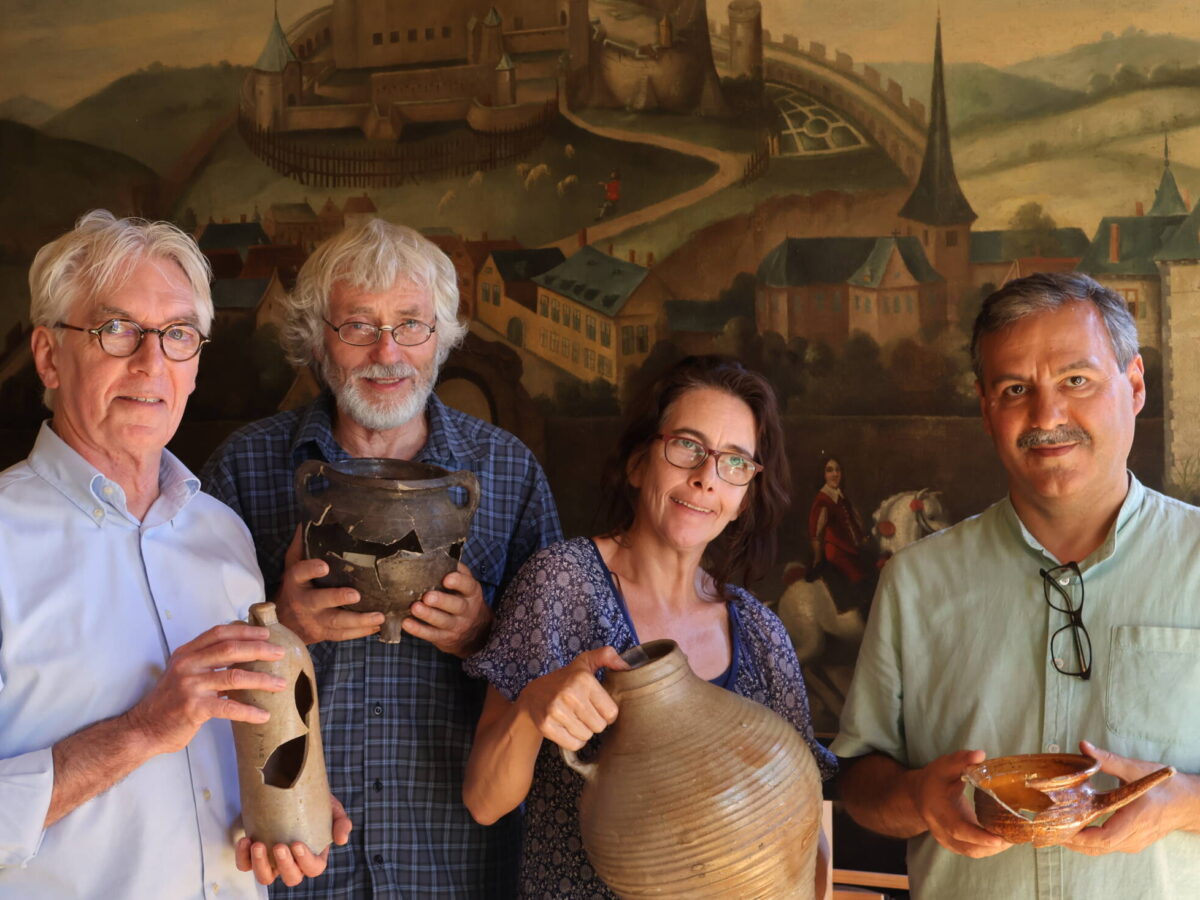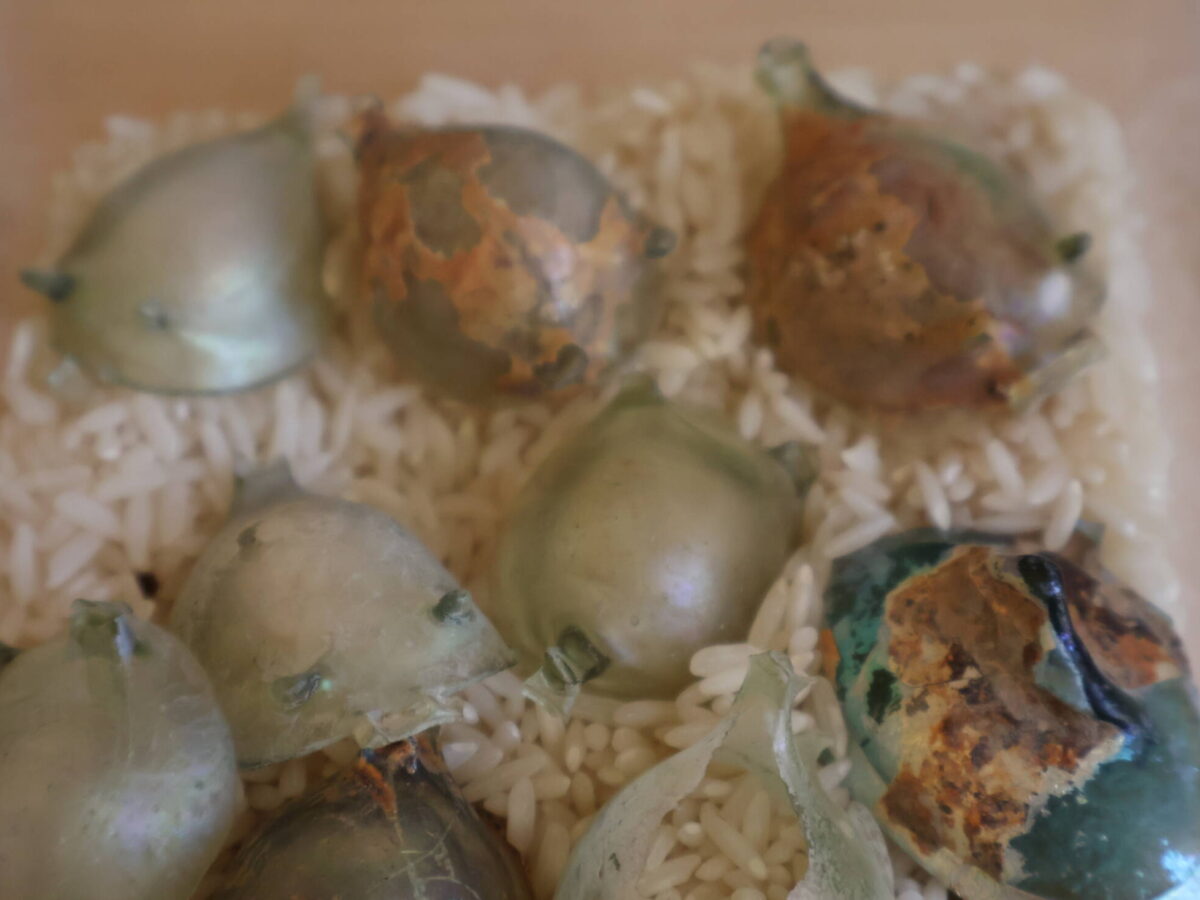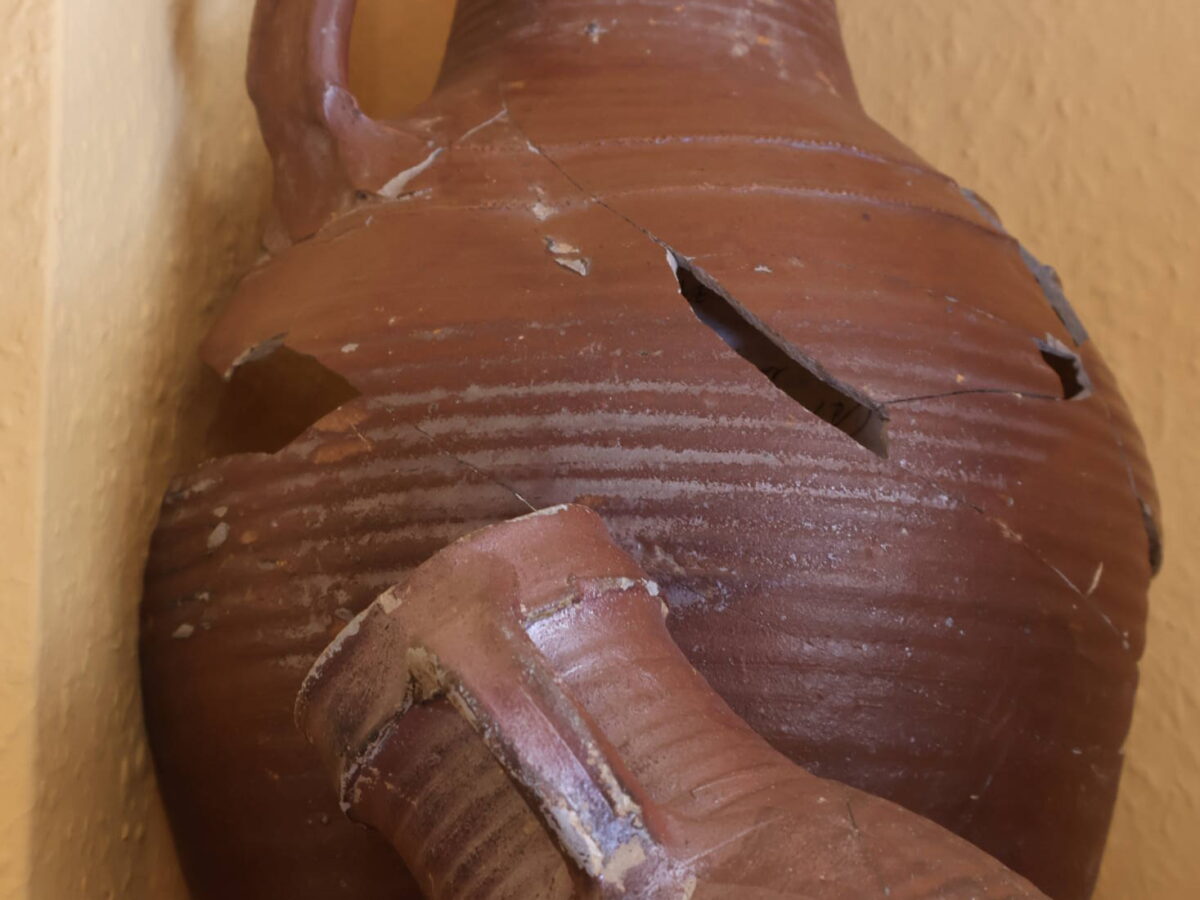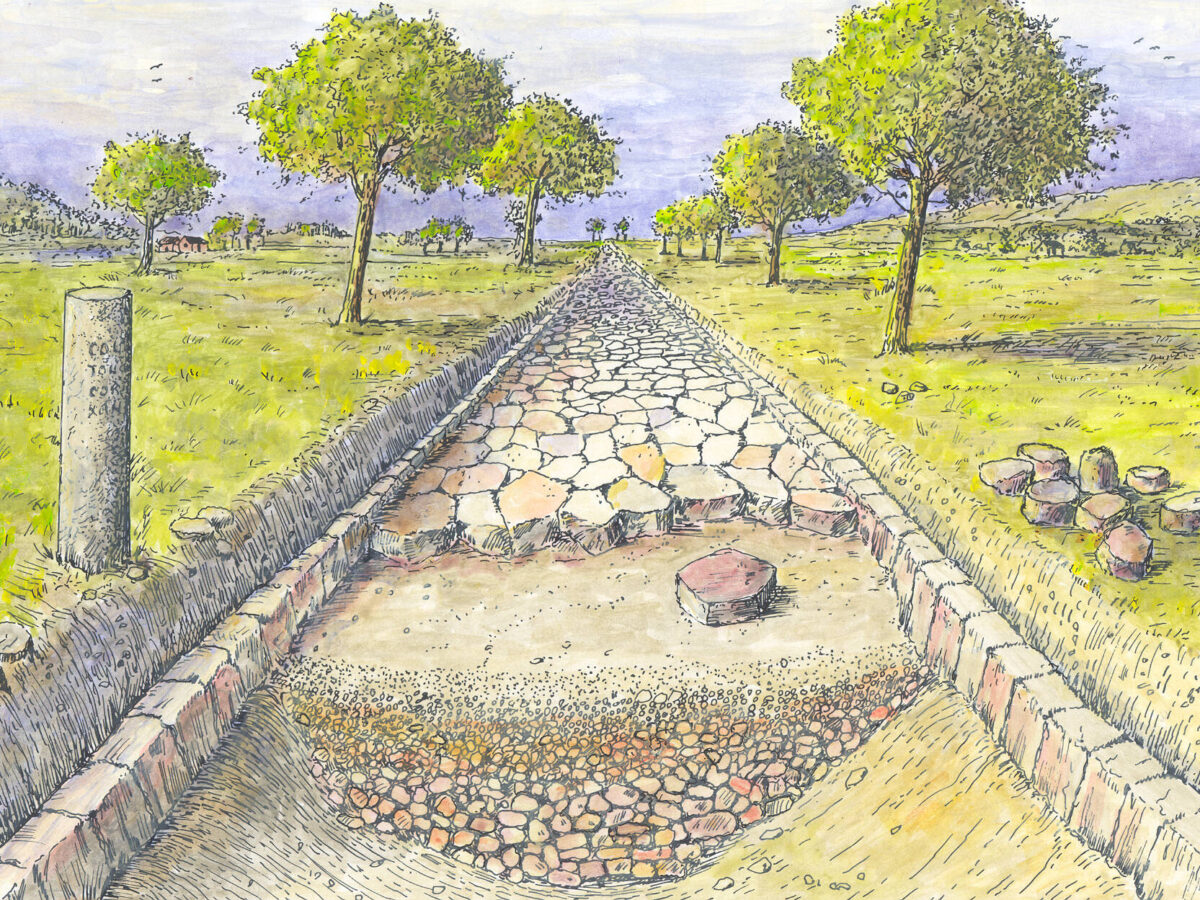Doeke Krikke discovered the Via Belgica in Houthem
Author: Harry Lindelauf
Photography: Anja Neskens
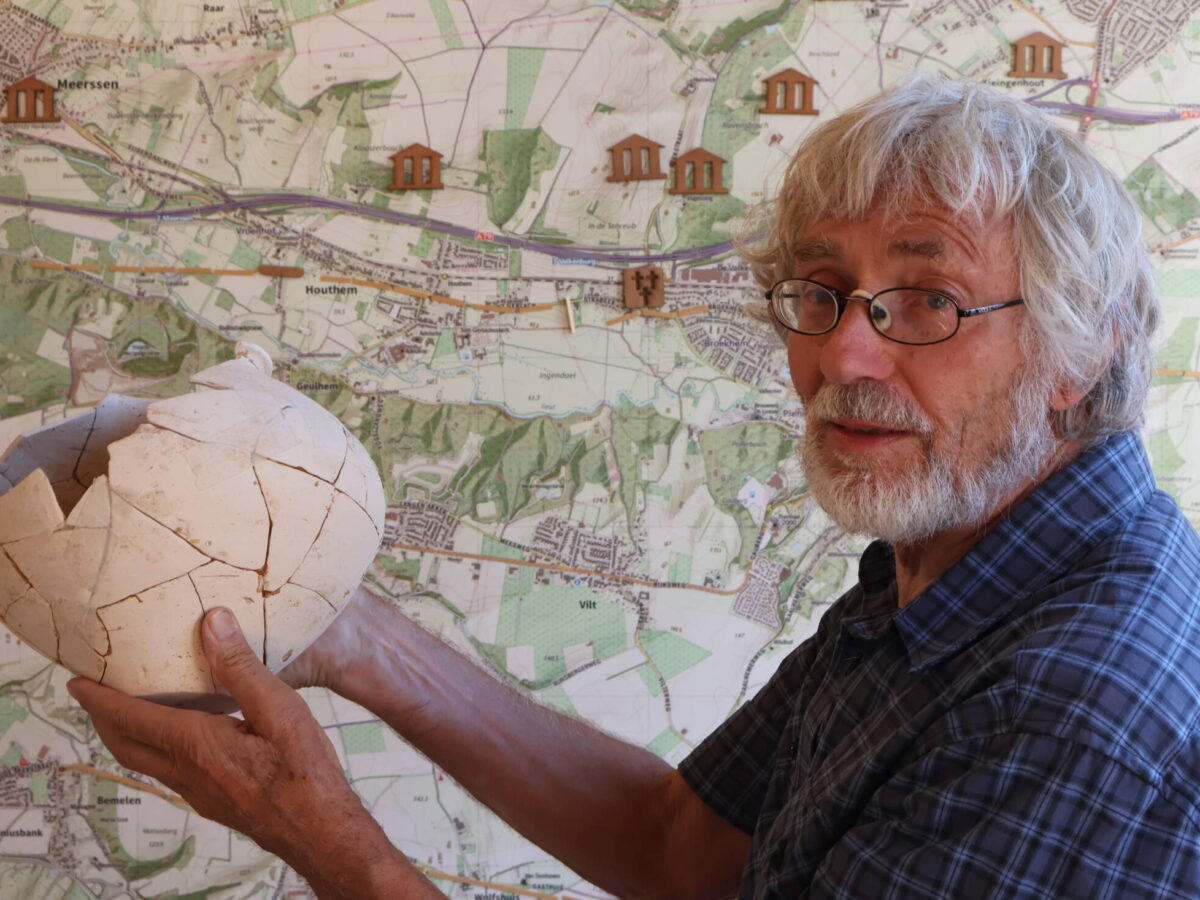
Doeke Krikke is one of the amateur archaeologists who participated in Heel Heerlen Graaft. It was not the first time he searched for Roman traces: in 2017 he was the one who discovered the Via Belgica in Houthem.
“I came by when they had dug a trench for a pipe while paving a driveway. At the bottom I saw the surface of an older road. And often, there is an even older road beneath that — in this case, the Via Belgica. I thought about the location and the curve, and drew out where the Roman road would have continued. A test pit and drillings made it clear that the Via Belgica ran here,” Doeke recalls.
A beautiful discovery, although the joy has been tempered over the years because he did not receive the credit.
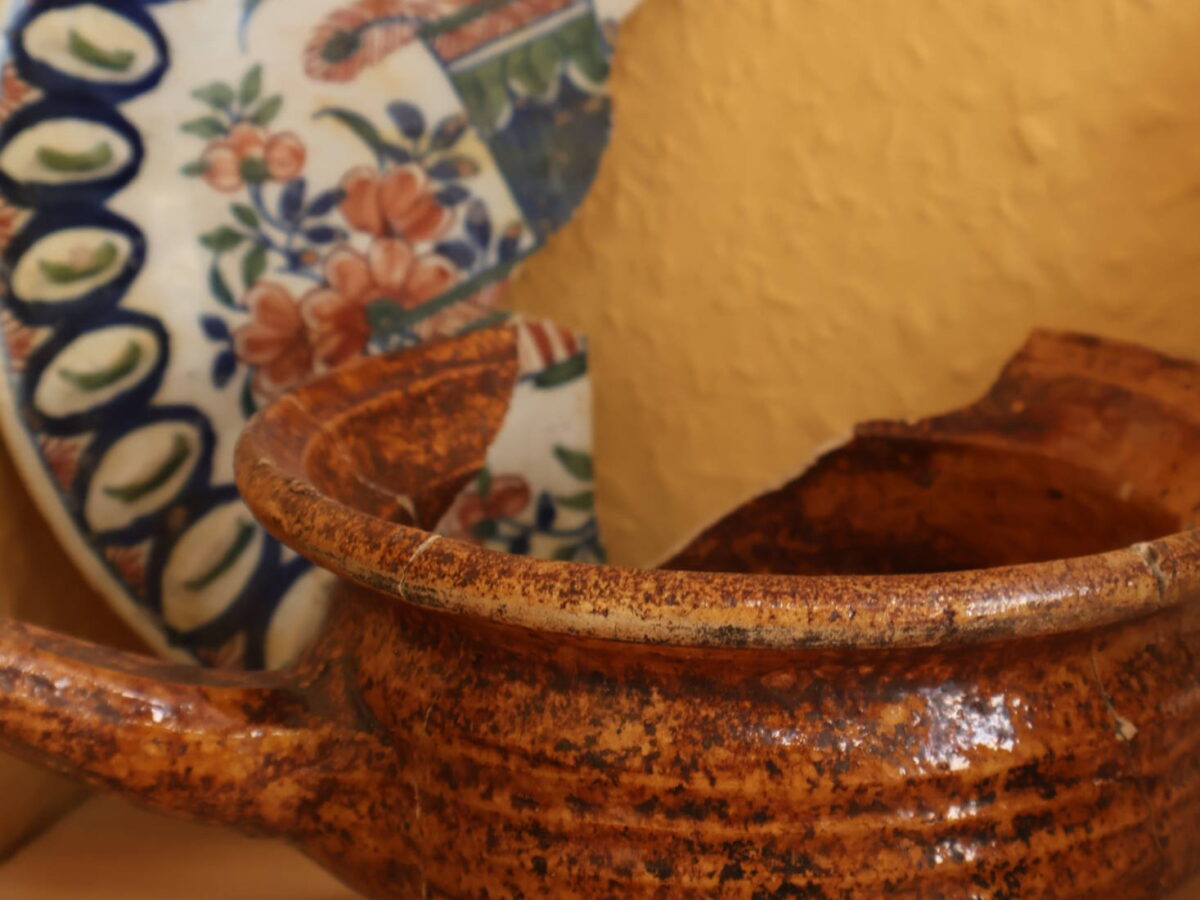
Ears and eyes
And yet, amateur archaeologists are “the ears and eyes” of professional archaeologists, says Doeke: “The amateur archaeologist is often the pioneer behind many magnificent discoveries because they provide clues for excavations. That’s why I think it’s important to honor the amateur archaeologist.”
Another reason, according to Doeke, is that the experience the amateur brings is “mainly a lot of practical work — very important.”
At 73, Doeke has over the years been involved in large and important excavations in the region. For example, at the former monastery of Gerlachus in Valkenburg-Houthem. After an extensive study, he wrote a solid book about it, which he also designed himself: Diary of an Excavation.
The finds at Gerlachus are remarkable: take the pottery bowls that show the monastery was a military hospital around 1794. Four centuries earlier, the 13,000-man army of Charles the Bold camped here. The sword of one of the soldiers was found. “As a child I already dreamed of finding a sword. And in one of the cesspits near the monastery, I found this sword. Truly, cesspits are a paradise for archaeologists.”
Perseverance
His parents moved from Hengelo to Limburg in the 1950s. Young Doeke went to technical school and started working as a concrete carpenter at the age of fifteen. Later, he also worked in Germany, but returned to the Netherlands for his family.
In the evenings, he first completed secondary school (MAVO), then partly HAVO, and then spent five years at the Maastricht City Academy (publicity and graphic design). He added another five years of evening study and earned his MO-A teaching certificate (handicrafts, technology, and art history). Working during the day and home at 5:30 p.m., then from 6:30 p.m. to school four evenings a week — this perseverance defines Doeke Krikke. “My father thought I wasn’t capable of more than technical school. And at the employment office they said something similar when I showed up with my HAVO diploma. Well, my reaction was: ‘I’ll show you what I can do.’”
Tijdens de avondstudies verandert hij van baan. Door de grafische studie kan hij aan de slag bij een drukkerij en doet hij in de loop der jaren bij meerdere bedrijven vrijwel alle werk dat in een drukkerij valt te vinden. Dankzij de akte MO kan hij weer van baan veranderen: hij gaat tot aan zijn pensioen nog tien jaar lesgeven aan meerdere scholen.
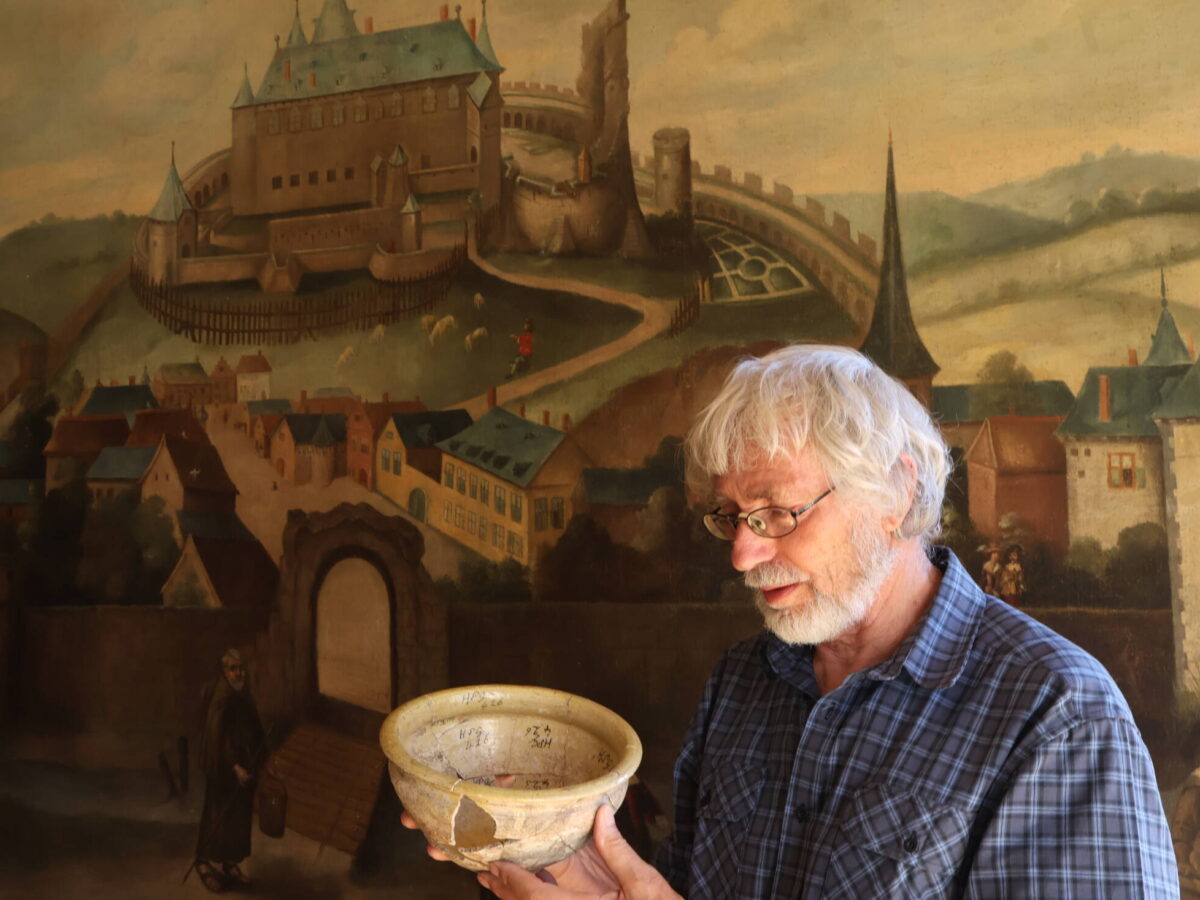
So wonderfully beautiful
His love for archaeology began at a young age. At 16, Doeke was allowed to help with an excavation next to the Roman bathhouse in Heerlen. “That’s where I caught the fever.”
In his free time in the following years, he could often be found as an amateur archaeologist at numerous excavations. For example, in the search for history in the Saint Servatius Church in Maastricht. He was one of the volunteers who, with conviction, continued to search meticulously when the professionals wanted to stop.
That perseverance was rewarded with a Merovingian sarcophagus containing the skeleton of a woman wearing a 24-carat gold necklace and another with gems and semi-precious stones. “So wonderfully beautiful.” Because of the jewelry, the find became known as The Rich Lady. Doeke was also involved in the Roman discoveries at Hotel Derlon. There, about six meters below the current street level, he saw a fragment of the old city wall, Roman remains, and the pavement of the oldest road ever found in the Netherlands. In the museum on the Vrijthof, a tile still commemorates that last discovery.
Lead bullets and silver coins
Since early 2023, he has been active in Ingendael — the nature reserve along the Geul between Valkenburg and Houthem — thanks to his “fascinating hobby that really got out of hand.” He searches the area with a metal detector, combining two goals. In the area, which once housed a shooting range, Doeke voluntarily searches for bullets that remained in the ground, preventing lead pollution in the reserve.
He has an agreement with Limburgs Landschap that he may keep other finds. An agreement that still makes the amateur archaeologist happy every day.
He has already found about 700 bullets; his collection now also includes two 200-year-old silver coins, 30 coins up to 150 years old, a gold ring, and silver jewelry.
